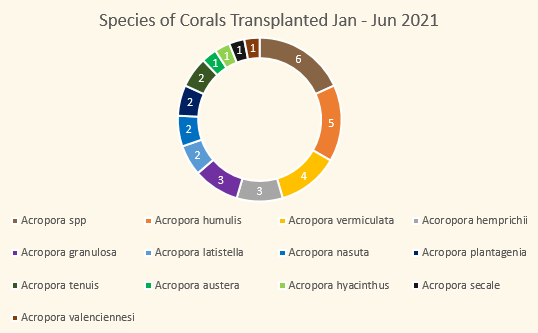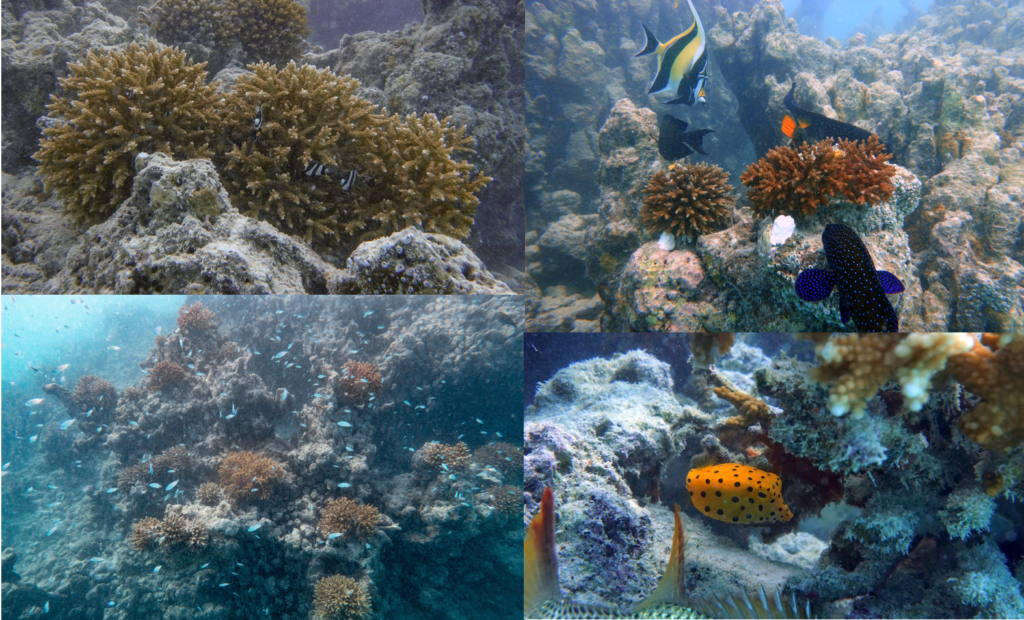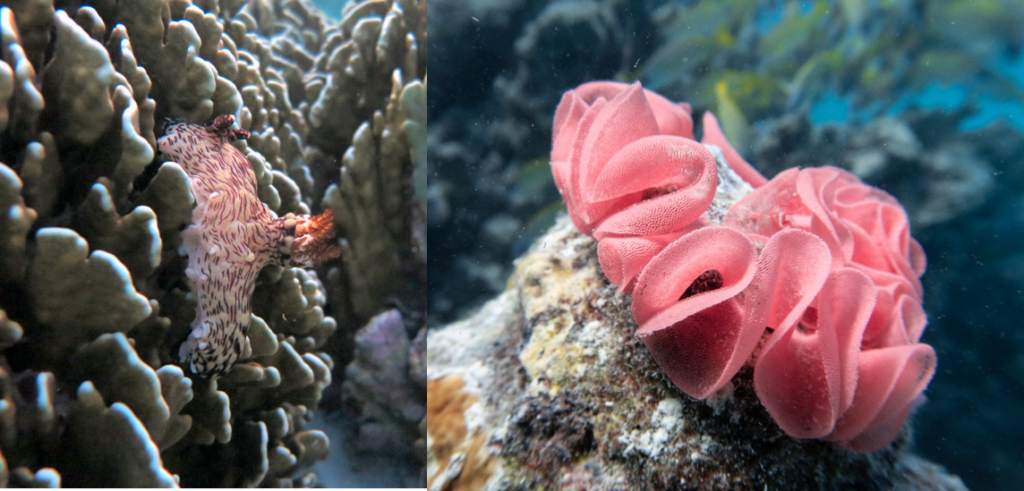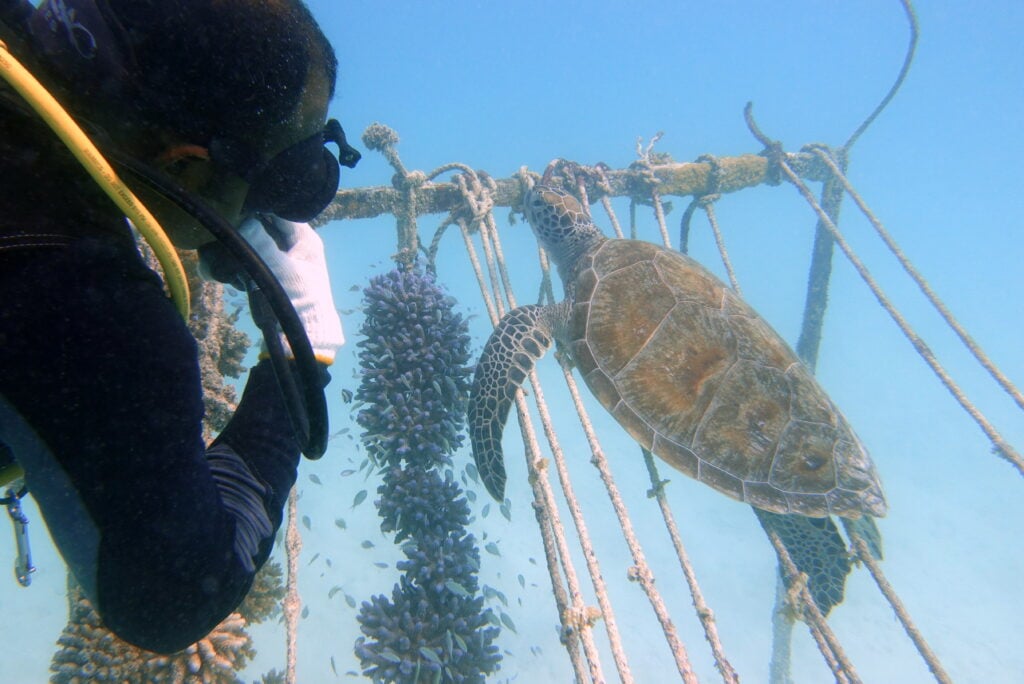Coral transplanting at Gili Lankanfushi has really taken off in the year 2021! To date, we have transplanted 59 lines, of which 37 was transplanted in the first half of this year. Thanks to the kind donations of our guests throughout the years, many lines in our coral nursery are reaching their time for transplanting. This year we started to shift our focus on speeding up the process of coral transplanting and have transplanted over a dozen Acropora coral species back to the natural reef around Gili Lankanfushi.


As a result of the habitat improvement and expansion, we have noticed an increase in marine biodiversity on our transplanting site; an area that was previously completely bare due to the 2016 mass bleaching event is now teeming with life. Keep reading to find out more about some of the marine animals we have found at our nursery and transplanting site.
Fish!
Since transplanting, we have noticed a definite increase in fish life around the transplant site. The branching corals provide a shelter and habitat for smaller fish such as Humbug Damsels as seen below. The presence of coral and these smaller fish subsequently attract larger fish t the area. One of our favourites is the yellow boxfish and I think you can see why; a bright colour, a great pattern, and a cute face to boot! The smallest one we’ve seen so far was just under one centimeter.
Nudibranch eggs
At first glance it looks like somebody has dropped a hair scrunchie or hung up some party decoration, but we are actually looking at an egg ribbon laid here by a nudibranch, which is a nicer sounding word than ‘sea slug’. These particular eggs belong to the red-lined kentrodoris nudibranch which is rarely encountered in the Indo-Pacific oceans!
Green turtle
We have a few resident green turtles that munch on the seagrass around our island and linger around after. However, two in particular have made unique use of our coral lines as a hammock once their bellies are full. One of them is not particularly shy as you can see in the image below!
Scorpionfish
Not quite on the lines or at the transplant site, but we wanted to give a special mention to a juvenile scorpionish we found this month hanging out on a platform we have been using to store coral fragments that are reserved for creating new coral lines with. It swam away from underneath our hands as we picked up a piece of dead coral. We were glad it spotted us first since this fish can deliver a very painful sting when it’s trapped! They are masters of camouflage even mimicking the texture of the reef, so once you’ve spotted them they are fascinating to look at!